Bouba-Kiki effect: eating with your eyes

Look at the shapes above. Which of these shapes would you name as “Bouba” and “Kiki”?
Did you associate the angular and pointy shape to the word “kiki” and the round shape to the word “bouba”? It’s quite likely: 95% of people do the same. But why? The Boba-Kiki effect was first observed by German psychologist Wolfgang Köhler, in 1929. Köhler presented a form identical to the one above to the participants of his study and found that there is a strong trend in associating certain meaningless words, in this case, “takete” (or “kiki) and “baluba” (or “bouba”) to certain shapes.
If we look at the Boba-Kiki effect, it’s easy to understand that sound symbolism is highly relevant when concerning the way in which we associate words to the shape of objects. Considering a linguistic approach, words that contain front vowels such as [i], [e] and [a], which are higher pitched, evoke angular and pointy shapes (e.g. “kiki”, “kichiki”, “takete”). On the other side, words formed by back vowels such as [u], [o] and [c], suggest round shapes (e.g. “bouba”, “maluma”, “baluba”). This trend may be due to the way in which these words are pronounced, associated to the mimetic of mouth movements.
Front vowels
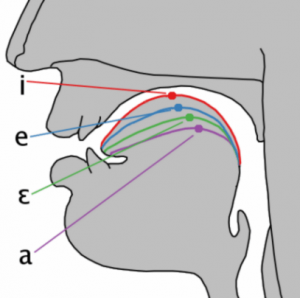
Back vowels
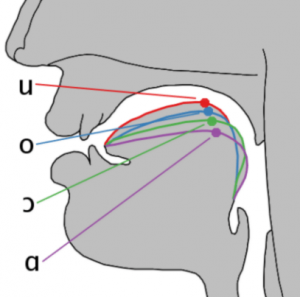
The Bouba-Kiki effect can also be observed in the world of food. In fact, the interaction between vision, hearing and taste is more relevant than one could imagine. Or, as the proverb says, we also eat with our eyes. In reality, sound is very important in the way we face our food. And to sound we associate shapes, and also flavour. And all of this also jumbled up together. Let’s see the examples below.
Sound and shape
It’s easier to associate a given name to an unknown dish if it suggests a sound symbolism. In the case of a study [2] made at Heston Blumenthal’s famous restaurant Fat Duck, participants were asked to name a dish of beets with the name “kichiki” or “malomu”. The dish containing beets that were cut in angular fashion and displayed in a triangular form was named “kichiki” by most participants (image on the left), while the dish containing beets that were cut in spheres and displayed in a circle was most voted as “malomu” (image on the right). Coincidence? Not really.
Kichiki

Malomu
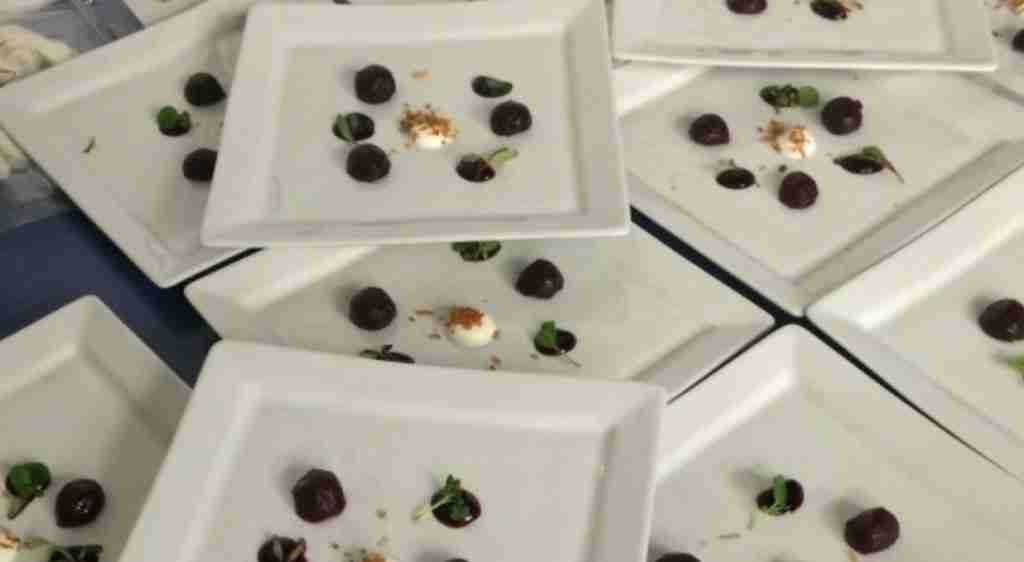
Sound and flavour
Sound symbolism is also related to the way we project flavors in regards to sounds: if you’re asked if a food is more “bouba” or “kiki”, you’ll probably associate sweet, round and fatty food to “bouba” and acid, fresh, bitter, salty or citric foods to “kiki”[3]. For some, carbonated water is “kiki”, while chocolate with caramel is “bouba” [1].
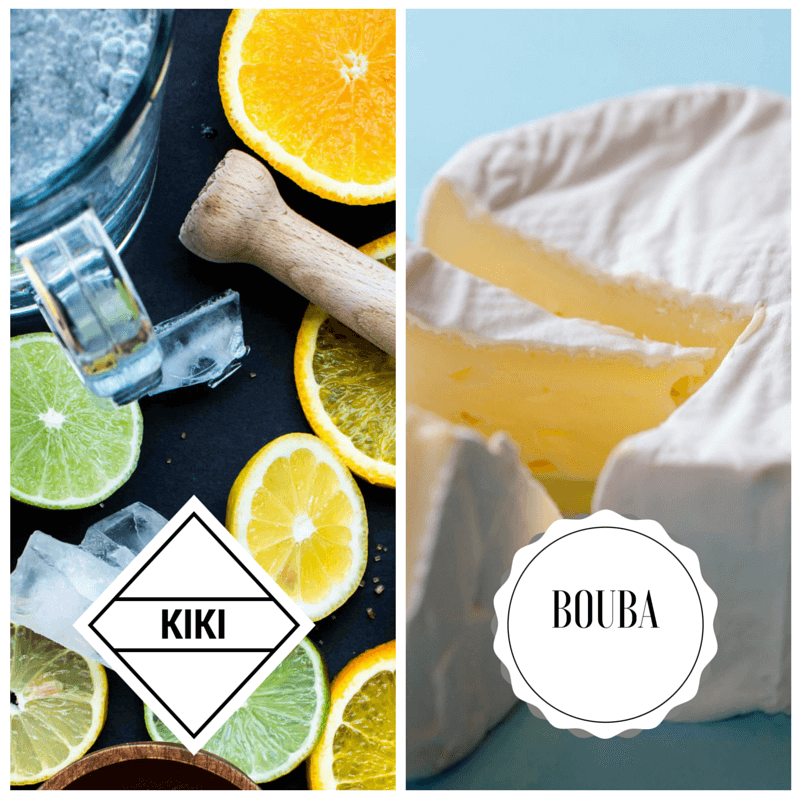
Shape and flavour
However, sensory associations go beyond expected, as there is also a strong connection between the perception of shapes and flavours. Some studies have verified that round shapes are almost exclusively associated to sweet while angular shapes may correspond to salty, bitter or acid [4].
This flavor-shape relationship doesn’t end here. In another study, it was observed that the shape in which food is presented may also influence our perception of its flavor. For instance, if you were presented with a round piece of cheesecake and a square piece of cheesecake, you’d probably consider the round piece sweeter. In fact, there seems to be a strong sensory connection between round shapes and sweetness [2].
Very, or little sweet?
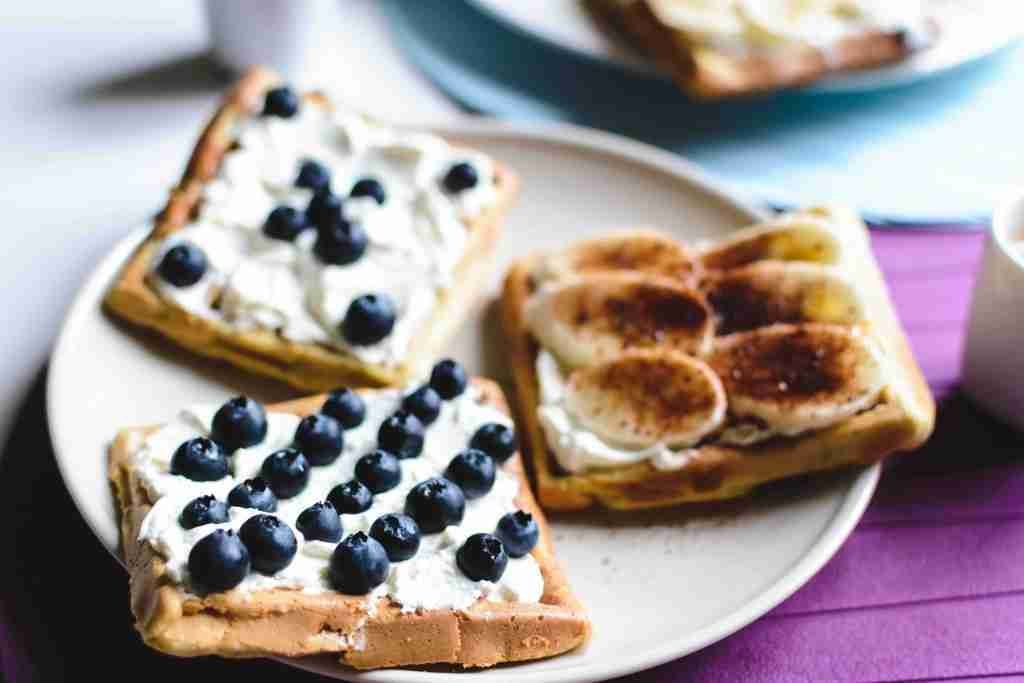
The names and shapes that we give to our foods and dishes may alter the way we perceive them. This is particularly interesting if we think about the what in which this affects our day to day life. When we read a name of a dish in a restaurant’s menu, we are unconsciously assessing the flavors of the dish through sound symbolism, and this may directly affect our choice. The shape in which food is displayed may even change the way we taste it. It’s also important to remember that this information is vital for the marketing of food products, where brands try to conquer the consumer’s subconscious choice by attributing names or shapes that are highly suggestive of the attributes of the product that are selling [3,5].
References [1] Spence, C., & Gallace, A. (2011). Tasting shapes and words. Food Quality and Preference, 22(3), 290-295. [2] Fairhurst, M., Pritchard, D., Ospina, D., & Deroy, O. (2015). Bouba-Kiki in the plate: combining crossmodal correspondences to change flavour experience. Flavour, 4(1), 22. [3] Favalli, S., Skov, T., Spence, C., & Byrne, D. V. (2013). Do you say it like you eat it? The sound symbolism of food names and its role in the multisensory product experience. Food Research International, 54(1), 760-771. [4] Velasco C, Woods A, Deroy O, Spence C. (2015) Hedonic mediation of the crossmodal correspondence between taste and shape. Food Quality and Preference, 41:151–8. [5] Spence, C., & Ngo, M. K. (2012). Assessing the shape symbolism of the taste, flavour, and texture of foods and beverages. Flavour, 1(1), 1-13.


Daniela Longo Gargiulo
Fantástico post! Gostei muito.
Parabéns
Amass. Cook.
Muito gratos, Daniela!
João Carvalho
Já me fizerem este “teste” antes de vir aqui ler este post e realmente foi o que eu escolhi.
Adorei o post, ansioso por ler mais!
Amass. Cook.
Muito obrigado, João!
Vera Dantas
Muito bem redigido, fundamentado e explicado e, ainda, apelativo. Um bom trabalho de redacção e uma temática muito interessante. Os meus parabéns Bruno e Maria!